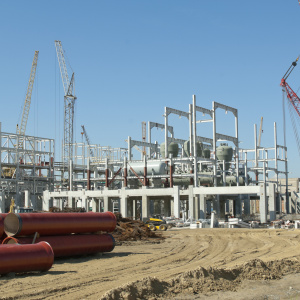
A company cannot expect sustainable commercial success unless it develops an expert understanding of its own operational performance, its customers’ behaviour, and the financial outcome of customers’ interaction with the organisation.
Well that’s a bit obvious isn’t it?
But it’s actually very unlikely to happen in a large company if the Insight function doesn’t build a commercial foundation for all its work.
It’s the Insight function that ought to have access to so many pieces of the commercial jigsaw. And the Insight team’s researchers and analysts who ought to have the skills to identify the pieces which they don’t currently have, and know where to find them, and understand where to put them.
But what does a commercial foundation look like? It’s an easy concept to suggest but rather more difficult to define, which doesn’t help Insight teams that would like to improve this side of their work.
Based on its experience with Insight teams from across all industry sectors in the UK, Europe and North America, the IMA believes that a commercial foundation is essentially a body of knowledge and understanding comprising:
1. The assembly of Core Stats, which cover:
- Internal facts and figures relating to how the organisation makes money in a particular market
- External facts and figures which together cast light on where and why the organisation makes money in that market
2. The development of a Business Blueprint which:
- Arranges those Core Stats in a model, effectively mapping the parts and processes of the organisation which result in the delivery of a service to a customer
- Maps the external market to show the circumstances which drive customers to do business in that way with that organisation
- Identifies the linkages between different ‘nodes’ in this model that illustrate how a change in one measure might have a knock-on effect on another (e.g. a rise in brand awareness leading to more purchase consideration, or a decrease in bank branches or stores leading to a decline in new accounts or sales)
3. Insight about dynamics, trends, opportunitities and threats:
- The Insight team will then want to overlay insights about the key dynamics and trends which it uncovers in its research and analysis. This is not a one-off exercise, as each substantive piece of work during the year should add to the team’s knowledge of customer behaviour and its drivers. However, building a commercial foundation will definitely require extra effort at the outset.
4. An executive brief which describes the Core Stats, their role in the Business Blueprint, and the key trends and dynamics:
- This could take the form of a document or presentation delivered to an incoming senior manager, designed to enable him or her to understand how consumers interact with the organisation and produce a commercial return
- Or you could use gamification, and create a quiz based on the facts, figures, insights and ideas you have produced
Customer and market Insight has the potential to dramatically improve the performance of any organisation. If your Insight team has the ambition to make that happen in your company, then it will need to build a commercial foundation for its work, and then build on this foundation with every piece of analysis and every new market research project.
If you would like to read an introduction to the whole topic of Insight commerciality, or more about developing commercial foundations, valuation or Insight ROI, then the IMA has now introduced a range of 10-page Insight leader guides to help you.
If your organisation has paid for a Digital, Network or Forum membership, and you log into our website you will be able to see them by clicking here.
If your company is part of the IMA’s free Community then please have a look at the summaries of the guides by clicking here, then contact us if you’d like to sign up for access to them.
